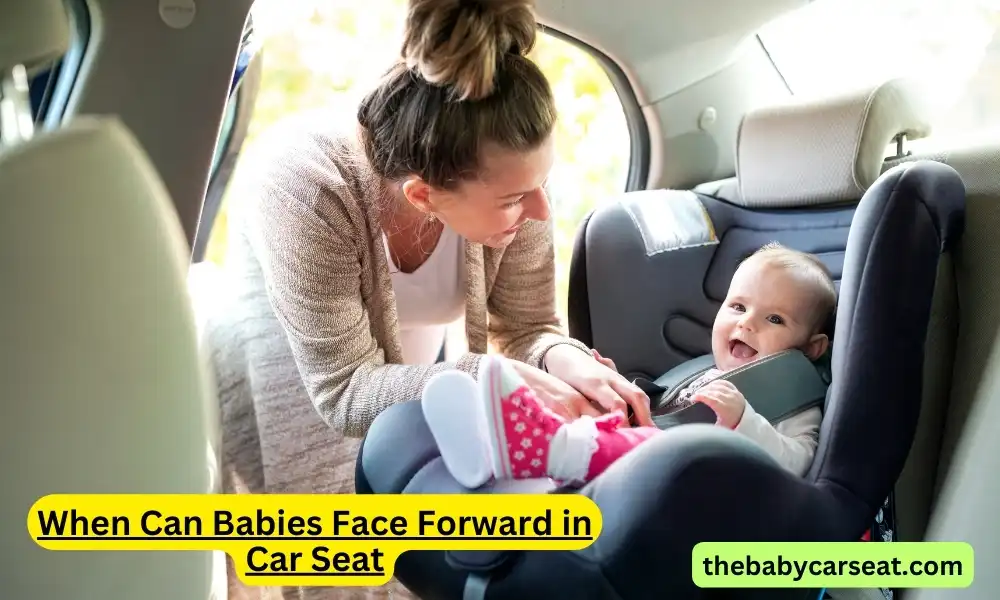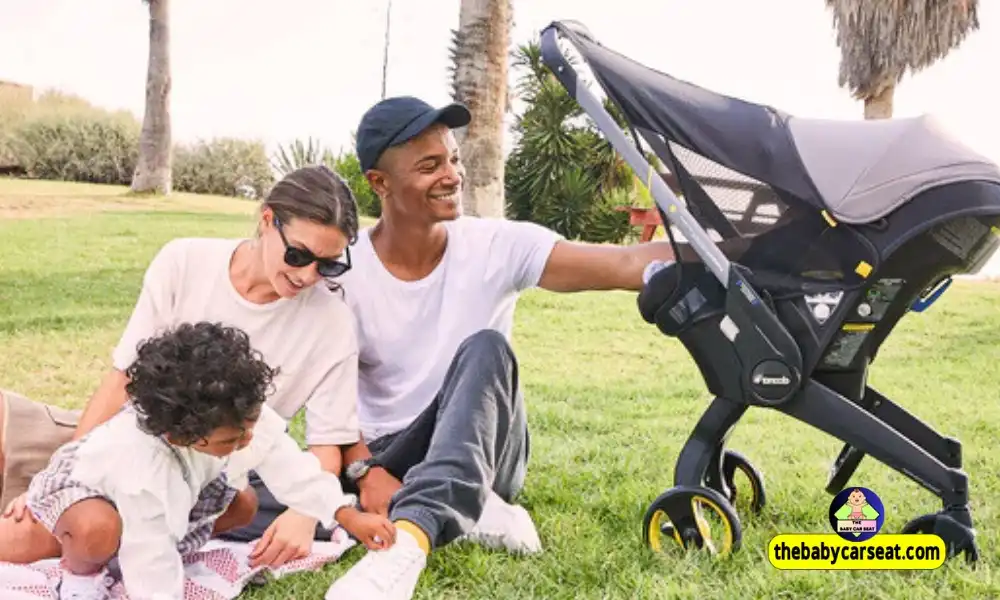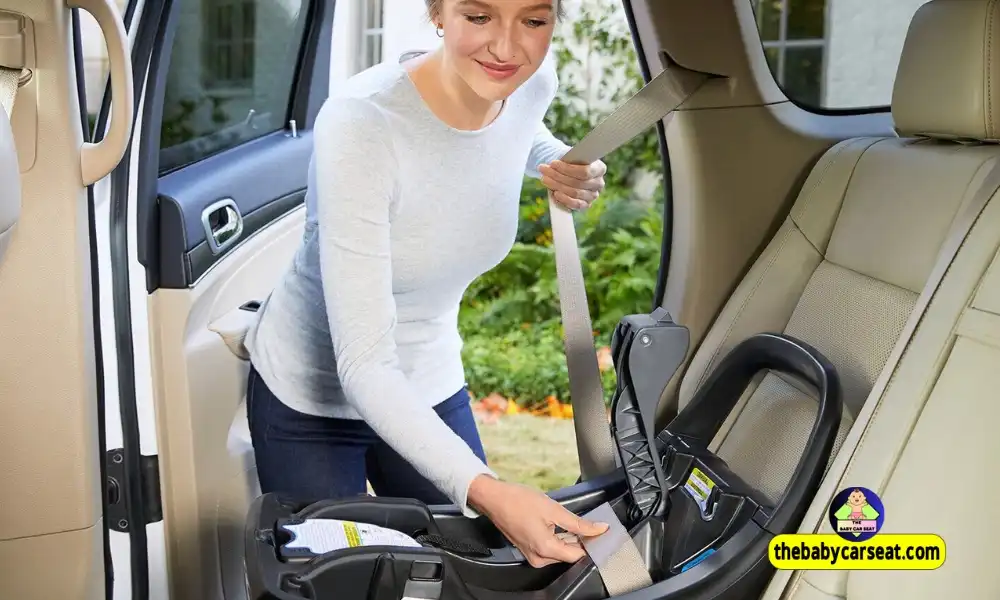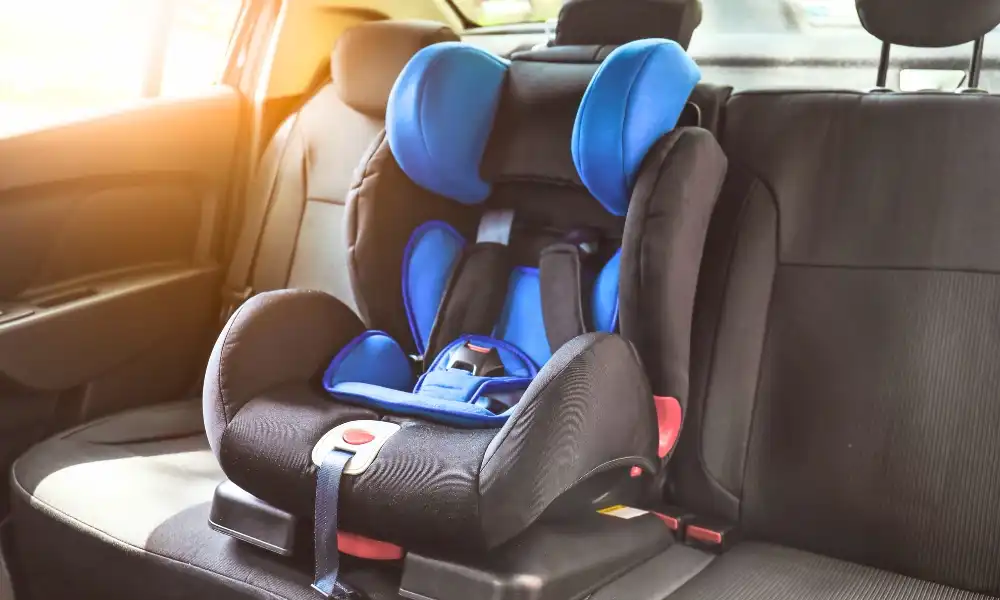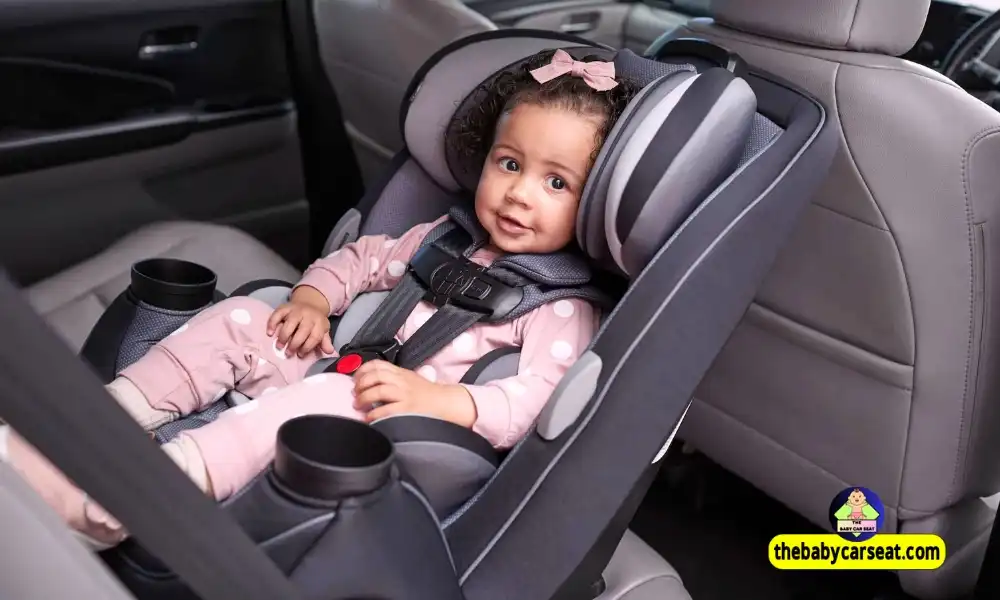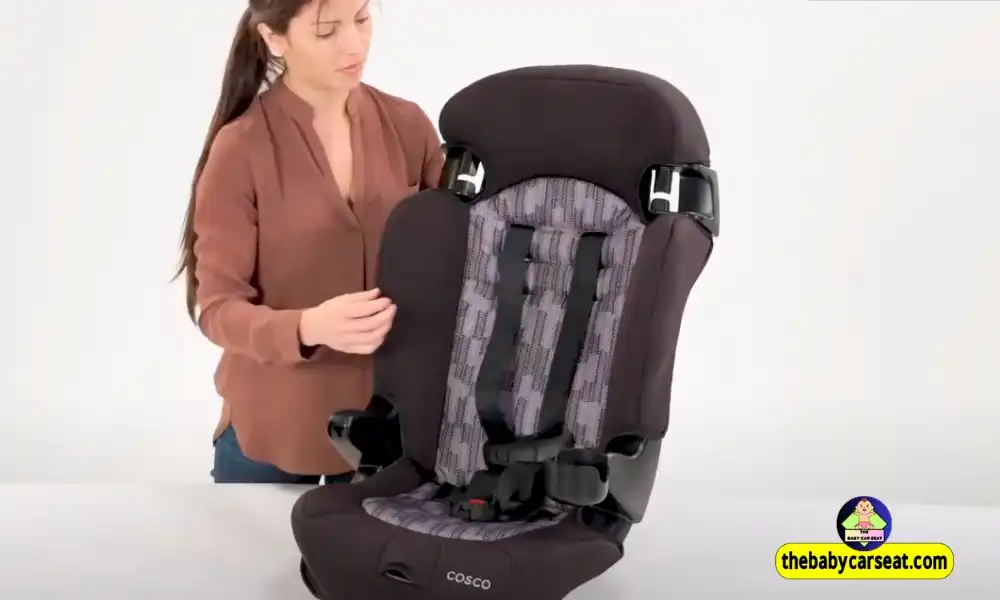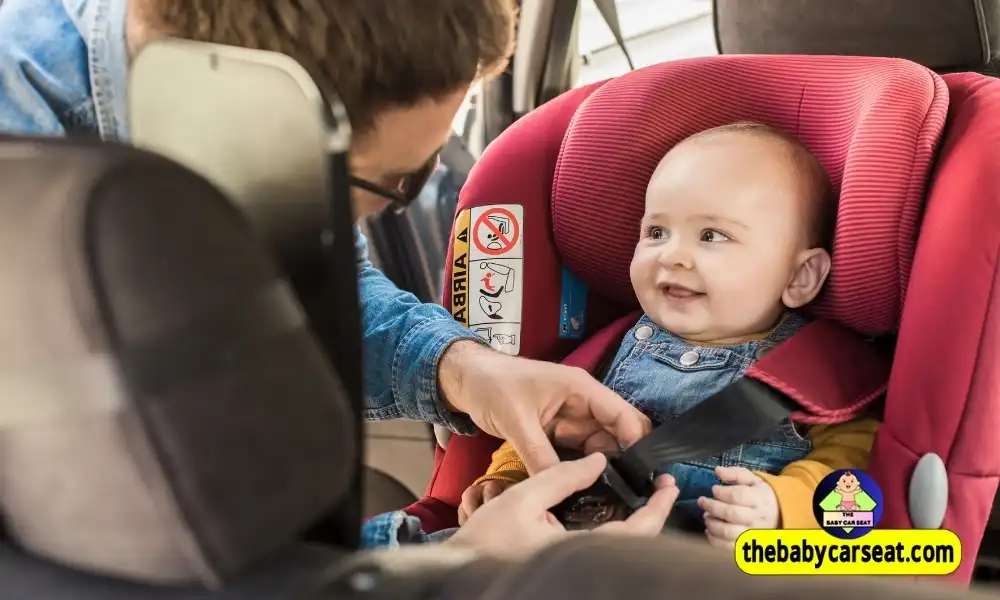When Can Babies Face Forward in Car Seat – Babies can face forward in a car seat when they reach 2 years old. The American Academy of Pediatrics recommends keeping children rear-facing until this age.
Parents often wonder when it’s safe to switch their baby’s car seat position. It’s important to understand the guidelines and reasons behind them. Rear-facing car seats provide better protection for a baby’s head, neck, and spine. This is crucial in case of an accident.
As babies grow, parents may feel tempted to turn the seat around. But patience is key for safety. This blog will explore the details on when and why to make this change. It will help you ensure your baby travels safely at all times.

Credit: www.inspirahealthnetwork.org
Introduction To Car Seat Safety
Ensuring your baby’s safety during car rides is crucial. Car seats play a vital role in protecting your child. Knowing when to switch your baby from a rear-facing to a forward-facing car seat is essential. This guide covers the basics of car seat safety and dispels common misconceptions.
Importance Of Car Seats
Car seats are designed to safeguard infants and toddlers during car trips. They reduce the risk of injury in accidents. Using the right car seat can make a significant difference.
- Rear-facing seats provide better head and neck support for infants.
- Forward-facing seats are for older children who meet specific criteria.
Studies show that proper car seat use decreases the risk of fatal injury by up to 71% for infants and 54% for toddlers.
Common Misconceptions
Many parents have misconceptions about car seat safety. Here are some common myths and the truth behind them:
| Myth | Reality |
|---|---|
| Babies can face forward at 1 year old. | It’s safer to keep them rear-facing until at least age 2. |
| My child is too tall for a rear-facing seat. | Most seats accommodate children up to 40 pounds or more. |
| Car seats are only necessary for long trips. | Car accidents can happen anytime, always use a car seat. |
Understanding these facts helps you make informed decisions about your child’s safety.

Credit: www.evenflo.com
Rear-facing Car Seats
Rear-facing car seats are essential for young children. They provide critical protection during travel. This section will explore the benefits and guidelines of using rear-facing car seats.
Benefits Of Rear-facing
Rear-facing car seats offer numerous benefits. They protect your child’s head, neck, and spine. Here are the key benefits:
- Enhanced Safety: Rear-facing seats absorb crash forces better.
- Neck Protection: They support the child’s fragile neck and spine.
- Head Support: They prevent the head from jerking forward.
Age And Weight Limits
Car seat manufacturers specify age and weight limits. It is crucial to follow these guidelines:
| Car Seat Type | Age Range | Weight Limit |
|---|---|---|
| Infant Car Seat | 0-2 years | Up to 35 lbs |
| Convertible Car Seat | 0-4 years | Up to 50 lbs |
Children should remain in rear-facing seats as long as possible. Always check the manufacturer’s guidelines for specifics.
Transitioning To Forward-facing
Transitioning your baby to a forward-facing car seat is a big step. It’s a milestone that parents look forward to, but it’s important to know the right time and signs. Ensuring your child’s safety is the top priority.
When To Transition
The American Academy of Pediatrics (AAP) recommends children stay in rear-facing car seats until at least age 2. They should remain rear-facing until they reach the seat’s maximum height or weight limit. This offers the best protection in case of an accident.
Check the car seat manufacturer’s guidelines. They provide specific height and weight limits. Make sure your child meets these before making the switch. Adhering to these guidelines ensures your child’s safety.
Signs Your Child Is Ready
There are clear signs that indicate your child is ready for a forward-facing seat:
- Height and Weight: Your child has outgrown the rear-facing seat’s limits.
- Head Position: Your child’s head reaches the top of the seat.
- Behavior: Your child is uncomfortable in the rear-facing seat.
Use a chart to keep track of your child’s growth. This helps ensure you transition at the right time.
| Age | Average Height | Average Weight |
|---|---|---|
| 2 Years | 34 inches | 27 pounds |
| 3 Years | 37 inches | 32 pounds |
Keep these metrics in mind as you monitor your child’s development. The goal is to ensure safety and comfort. Follow these guidelines to make the transition smooth and secure.

Credit: www.safewise.com
Safety Standards And Regulations
Ensuring the safety of your baby while traveling is crucial. Understanding car seat safety standards and regulations is key. These regulations help parents make informed decisions about when babies can face forward in a car seat. Let’s explore the specific guidelines and regulations in place to keep your child safe on the road.
U.s. Guidelines
In the United States, the American Academy of Pediatrics (AAP) provides clear guidelines. They recommend that children remain in a rear-facing car seat until at least the age of two. This is because rear-facing seats offer better protection for the child’s head, neck, and spine.
Furthermore, many states have their own laws. These laws might require children to stay rear-facing beyond the age of two. It’s important to check the specific requirements in your state to ensure compliance and safety.
Here is a quick overview of U.S. guidelines:
- Rear-facing until at least age two.
- Follow state-specific laws for car seat regulations.
- Check the car seat manufacturer’s recommendations on weight and height limits.
International Regulations
Different countries have their own car seat safety standards. It’s essential to follow these regulations when traveling internationally.
For example, in Europe, the European Safety Standard ECE R44/04 or i-Size (R129) applies. These standards often require children to remain rear-facing until they are at least 15 months old. Some countries, like Sweden, recommend rear-facing until age four.
Here is a table summarizing the key international regulations:
| Country | Rear-Facing Age | Regulation |
|---|---|---|
| United Kingdom | 15 months | ECE R44/04 or i-Size (R129) |
| Australia | 6 months | Australian Standard AS/NZS 1754 |
| Sweden | 4 years | Recommended by National Guidelines |
Always ensure that your car seat meets the safety standards of the country you are in. This will help protect your child in case of an accident.
Choosing The Right Car Seat
Choosing the right car seat for your baby is crucial. It ensures safety and comfort during travels. This section will guide you through important aspects to consider.
Key Features To Look For
When selecting a car seat, focus on these key features:
- Safety Standards: Ensure the seat meets federal safety standards.
- Adjustable Harness: A good harness adjusts as your baby grows.
- Side Impact Protection: This feature provides extra safety in case of a side collision.
- Comfortable Padding: Soft padding keeps your baby comfortable on long drives.
- Easy Installation: Choose a seat that is easy to install and remove.
Top-rated Car Seats
Here are some top-rated car seats that parents love:
| Car Seat Model | Key Features | Price Range |
|---|---|---|
| Graco 4Ever DLX | 10-year lifespan, multiple recline positions | $300 – $350 |
| Chicco NextFit Zip | Easy to install, machine-washable cover | $250 – $300 |
| Britax Boulevard ClickTight | ClickTight installation, two layers of side impact protection | $300 – $350 |
These models are known for their durability and safety. They provide excellent value for their price.
Remember, the right car seat can make all the difference. Choose one that best fits your baby’s needs and your car’s specifications.
Installation Tips
When it comes to your baby’s safety in the car, proper installation of the car seat is crucial. Whether your baby is rear-facing or ready to face forward, understanding installation tips ensures they are secure. Below are some essential tips and common mistakes to help you install the car seat correctly.
Proper Installation Techniques
Follow these installation techniques to ensure your baby’s car seat is safe:
- Read the car seat manual and your vehicle’s manual.
- Use the appropriate seat belt path for forward-facing.
- Ensure the car seat is tightly secured with no wiggle room.
- Use the top tether for extra stability.
- Check the recline angle to ensure your baby is comfortable.
Common Installation Mistakes
Avoid these common installation mistakes to keep your baby safe:
- Not tightening the seat belt or LATCH system enough.
- Using both the seat belt and LATCH system together.
- Incorrectly positioning the chest clip.
- Failing to use the top tether for forward-facing seats.
- Installing the car seat at the wrong angle.
Ensure you double-check your installation to avoid these common errors. Your baby’s safety depends on proper installation.
Traveling Tips With Babies
Traveling with a baby can be a daunting task. There are many things to consider to ensure a safe and comfortable journey. Whether you’re planning a long-distance trip or a short drive, these tips will help you navigate the journey with ease.
Long-distance Travel
Long-distance travel with a baby requires extra planning. Here are some tips to make the journey smoother:
- Frequent breaks: Take breaks every 2-3 hours for feeding and changing.
- Comfortable car seat: Ensure the car seat is properly installed and comfortable for the baby.
- Entertainment: Bring toys and books to keep the baby entertained.
- Snacks and drinks: Pack plenty of snacks and drinks for both you and the baby.
- Plan your route: Know your route and have stops planned along the way.
Short Trips
Short trips with a baby can be less stressful but still require some preparation:
- Check the car seat: Ensure the car seat is properly secured before every trip.
- Pack essentials: Bring a diaper bag with all the essentials like diapers, wipes, and a change of clothes.
- Timing: Try to plan trips around the baby’s nap schedule.
- Weather-appropriate clothing: Dress your baby according to the weather to keep them comfortable.
- Quick stops: If possible, make quick stops for feeding and changing.
These tips will help you have a smooth journey, whether it is long or short. Safe travels!
Frequently Asked Questions about When Can Babies Face Forward in Car Seat
When Can My Baby Face Forward In A Car Seat?
- Babies should remain rear-facing until they are at least 2 years old. Check your car seat’s weight and height limits.
What Is The Safest Car Seat Position For Infants?
- The safest position for infants is rear-facing in the back seat. This position offers the best protection.
Why Should Babies Stay Rear-facing Longer?
- Rear-facing seats provide better support for a baby’s head, neck, and spine. They significantly reduce injury risk in accidents.
How Do I Know My Baby Is Ready To Face Forward?
- Your baby is ready to face forward when they exceed the rear-facing height or weight limit of the car seat.
Conclusion
Choosing the right time for your baby to face forward is crucial. Always prioritize safety and follow guidelines. Keep them rear-facing until they reach the height or weight limit. Each child grows differently, so monitor their progress. Consult your pediatrician if unsure.
Proper car seat use protects your little one. Stay informed and make safe choices. Your baby’s safety is worth every effort.

